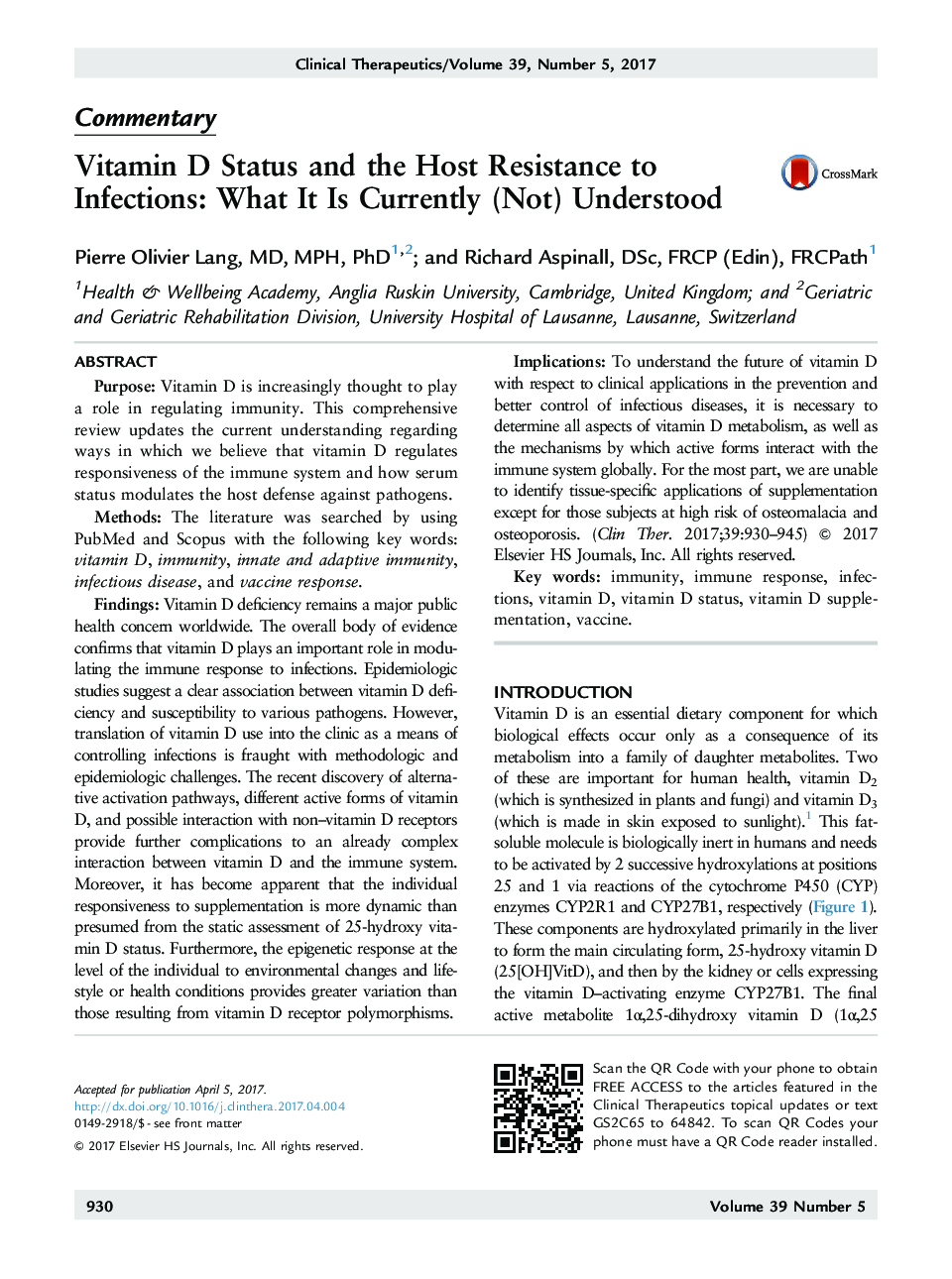| کد مقاله | کد نشریه | سال انتشار | مقاله انگلیسی | نسخه تمام متن |
|---|---|---|---|---|
| 5553787 | 1403014 | 2017 | 16 صفحه PDF | دانلود رایگان |

PurposeVitamin D is increasingly thought to play a role in regulating immunity. This comprehensive review updates the current understanding regarding ways in which we believe that vitamin D regulates responsiveness of the immune system and how serum status modulates the host defense against pathogens.MethodsThe literature was searched by using PubMed and Scopus with the following key words: vitamin D, immunity, innate and adaptive immunity, infectious disease, and vaccine response.FindingsVitamin D deficiency remains a major public health concern worldwide. The overall body of evidence confirms that vitamin D plays an important role in modulating the immune response to infections. Epidemiologic studies suggest a clear association between vitamin D deficiency and susceptibility to various pathogens. However, translation of vitamin D use into the clinic as a means of controlling infections is fraught with methodologic and epidemiologic challenges. The recent discovery of alternative activation pathways, different active forms of vitamin D, and possible interaction with non-vitamin D receptors provide further complications to an already complex interaction between vitamin D and the immune system. Moreover, it has become apparent that the individual responsiveness to supplementation is more dynamic than presumed from the static assessment of 25-hydroxy vitamin D status. Furthermore, the epigenetic response at the level of the individual to environmental changes and lifestyle or health conditions provides greater variation than those resulting from vitamin D receptor polymorphisms.ImplicationsTo understand the future of vitamin D with respect to clinical applications in the prevention and better control of infectious diseases, it is necessary to determine all aspects of vitamin D metabolism, as well as the mechanisms by which active forms interact with the immune system globally. For the most part, we are unable to identify tissue-specific applications of supplementation except for those subjects at high risk of osteomalacia and osteoporosis.
Journal: Clinical Therapeutics - Volume 39, Issue 5, May 2017, Pages 930-945